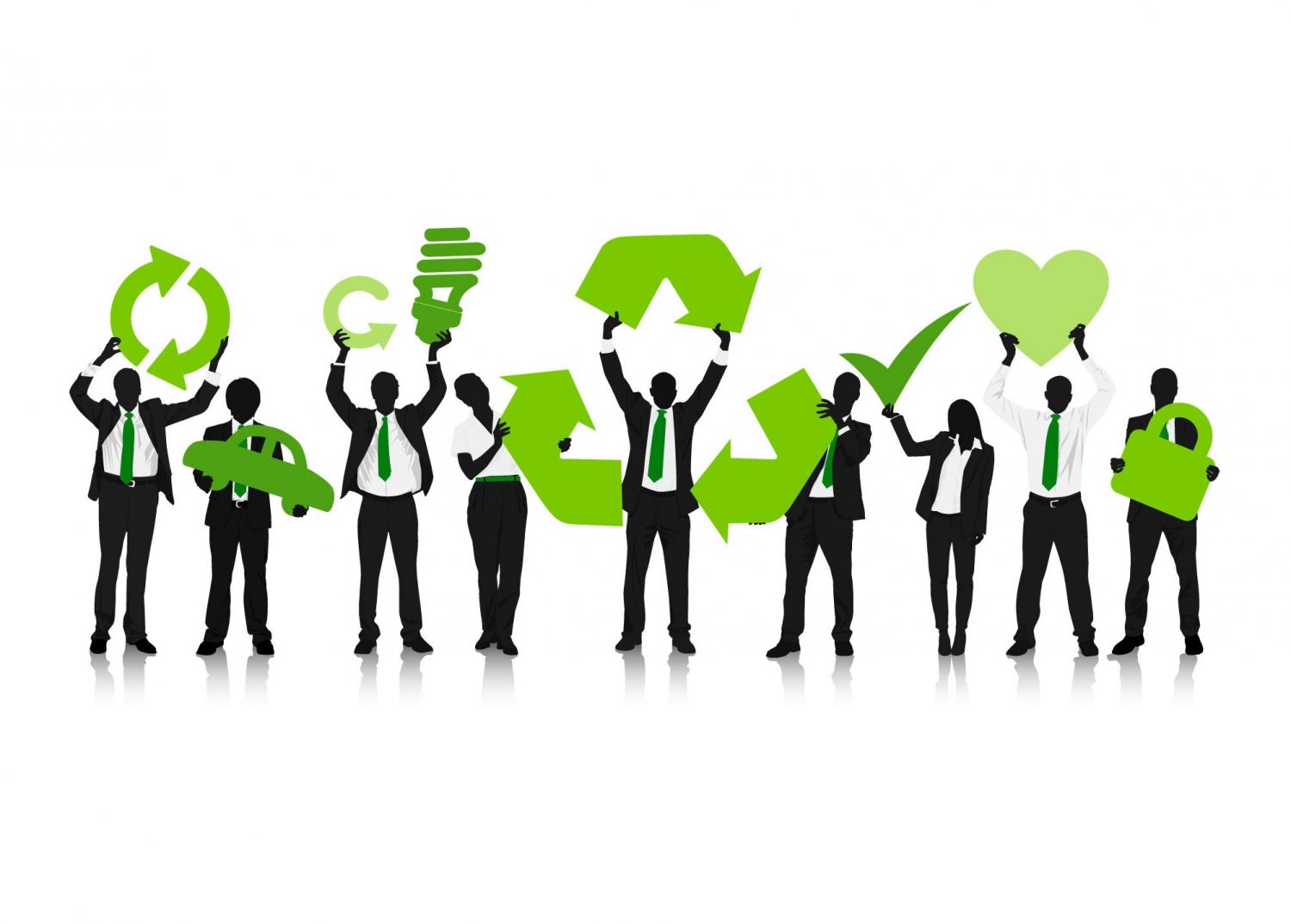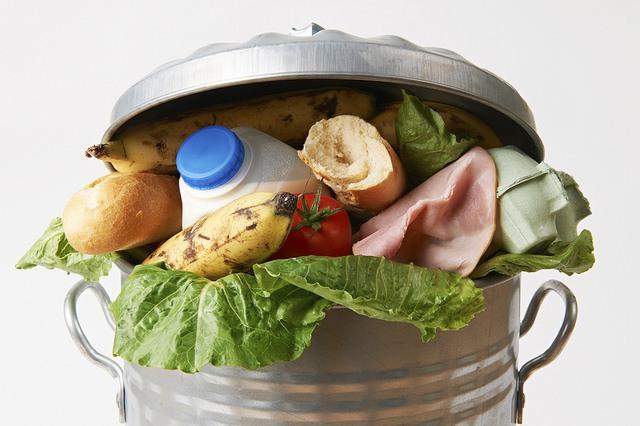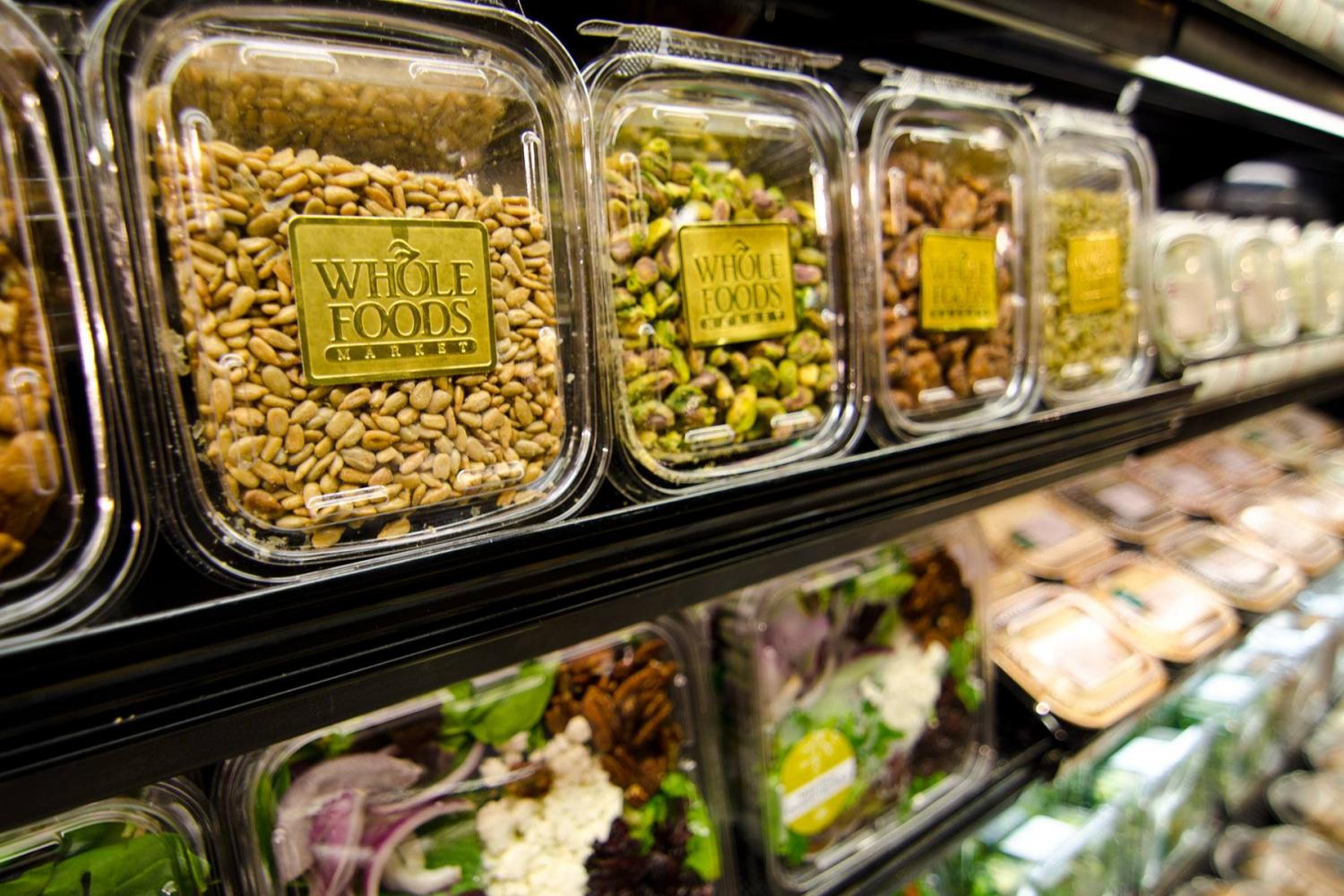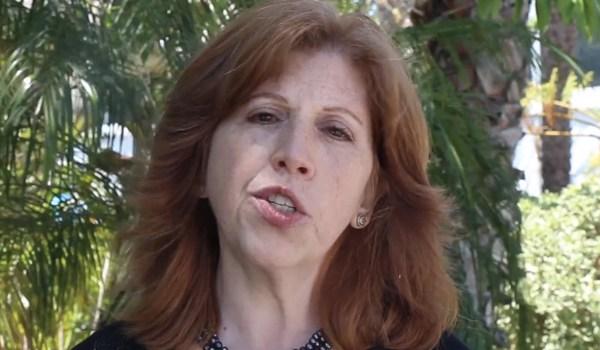Sharing Economy Brands That Are Good for the Environment


By Joel Cesare
“The secret of happiness, you see, is not found in seeking more, but in developing the capacity to enjoy less.”
- Socrates
Does your brand consider sustainability a core priority? Was your company founded on a platform of social responsibility? Is it the job of a corporation to consider people and planet along with profit?
As the sustainability movement plateaus towards inertia, these questions are becoming increasingly stale and boring. If you think you care about future generations and you don’t realize the answers to these questions are irrelevant, then your head is right next to the climate change deniers in the sand.
The question is: Can the planet’s resources sustain the onslaught of a global, growth-based capitalist economy? As population growth is expected to continue and emerging economies embrace the wasteful, growth-based economic model the U.S. has perfected, the answer is a resounding no. Regardless of private-sector efforts to “green” their operations and products, business-as-usual economics will lead us to global systemic failure sooner than we are willing to admit.
Now that I’ve warmed you up with hope and optimism, let’s get to the fun part of the blog. A solution…
The sharing economy
This is not an anti-capitalism argument. This is recognition that we need to rethink the way we exchange goods and services, and acknowledge that the endless pursuit of short-term growth goals does not mathematically align with the resources available on this planet. As Richard Heinberg points out in a recent piece about renewable energy’s inability to support economic growth: “Growth must no longer be the economy’s goal; rather, we must aim for the satisfaction of basic human needs within a shrinking budget of energy and materials.”
The sharing economy can simply be described as the eruption of peer-to-peer marketplaces made simple and cost-effective by the Internet. As the Economist stated, “On the Internet, everything is for hire.” Made famous by Uber and Airbnb, the sharing economy now extends into every niche of our lives imaginable. What was once mocked as a fad is now a $110 billion market and growing. And that may be the best part of this story. It has been embraced by major brands for its ability to create brand loyalty, community and customer data.
If the sharing economy can help us decouple economic growth from prosperity, and therefore solve long-term environmental destruction, it will have to become mainstream.
Numerous new brands are building communities that signal a shift toward this new way of people exchanging goods and services. What if your participation in a marketplace brought you a new, life-changing experience in the outdoors? What if stuff, doing nothing but causing clutter, could be exchanged for other people’s stuff you need? What if an ancient form of bartering was made globally accessible by a brilliant algorithm? What if all of this saved you money, made someone else money and required the extraction of no virgin resources?
Let’s check out three brands that are making this possible.
1. StokeShare
The guys at StokeShare don’t just want to stop at making action sports more accessible to everyone. They want their brand to fundamentally shift the next generation’s relationship with nature.
Inspired by the Toms one-for-one model, StokeShare commits to using action sports equipment from its marketplace inventory to take inner-city kids on outdoor excursions. In its recent blog about a surf outing with kids from downtown Los Angeles, the company describes, “The movement we are creating at StokeShare is based on the fact that people protect what they love, love what they know and know what they experience.”
So, the next time you wonder where to get camping gear or how to try stand-up paddleboarding, rent it from a fellow adventure-seeker on StokeShare.com, and know you’re helping connect young people with nature.
2. Yerdle
In Yerdle’s marketplace, everything is free. The company has gone so far as to invent a new term for interacting in its marketplace: unshopping.
Yerdle believes the world is ready to change the way we think about our belongings. According to the company, “Almost everyone has stuff they’re not using that's ready for its next adventure.” Yerdle is so sure of it, the company committed to a quantifiable metric stating it wants to reduce the amount of stuff we all need to buy by 25 percent.
That reduction equates to less deforestation, less mining and less social exploitation while still giving us an avenue to shop and express ourselves. So, post your awesome old jacket that your girlfriend is sick of, let it live in the universe, and get credits to put toward someone else’s cool stuff.
3. Swapdom
A term often used synonymously with the sharing economy is the circular economy. Nobody embodies this better than Swapdom. Consistent with the theme that somebody’s waste is another’s treasure, Swapdom simplifies the oldest style of trade known to mankind. Using a unique algorithm, Swapdom lets you pay with what you want to give away.
Its sophisticated, yet easy-to-use, app enables you to barter on a global platform. And the company even created a flowchart to help us de-clutter, which became an Internet phenomenon!
--
Whether it’s StokeShare’s "Own Less Do More Share Stoke," Yerdle’s "More Joy Less Stuff." or Swapdom’s "Pay With What You Want to Giveaway," it is clear the brands of the future have arrived. Platforms that enable people to thrive, share, and build communities are showing us we can live prosperously with less.
Image credit: Shutterstock
Joel is the Co-Founder of StokeShare, a peer-to-peer marketplace for adventure gear. Founded on the principles of sustainability, his start-up is dedicated to uniting the adventure sports community to leave the world better than we found it.
Joel is an avid surfer, snowboarder and adventure seeker, which built his passion for protecting the wild places. StokeShare also partners with nonprofits that connect underprivileged youth to the great outdoors with gear users list on StokeShare.com.
In addition to Co-Founding StokeShare, Joel is the Director of Green Building Programs for the City of Santa Monica's internationally recognized Office of Sustainability and the Environment.
OECD warns of true cost of fossil fuel dependence


Governments should conduct a more rigorous evaluation of the true costs of coal, OECD Secretary-General Angel Gurría has warned.
With prices failing to fully account for the environmental, health and financial costs of coal, many of the coal plants being built today may have to be shut down before the end of their economic lifetimes, Gurría stressed in a lecture hosted by the London School of Economics and Aviva Investors in association with ClimateWise.
“Coal is not cheap,” Gurría said. “Governments need to be seriously sceptical about whether coal provides a good deal for their citizens.”
Without new mitigation measures, coal generation is projected to emit more than 500 billion tonnes of CO2 between now and 2050 which would eat up around half the remaining carbon budget consistent with keeping a global temperature rise below 2 degrees Celsius.
He said the carbon clock is ticking and the Paris COP21 climate conference in December must give a clear and credible signal that governments are determined to go for a higher level of ambition.
Gurria's speech coincided with the publication of a new report published by the OECD, the International Energy Agency (IEA), the Nuclear Energy Agency (NEA) and the International Transport Forum (ITF), Aligning Policies for a Low-carbon Transition, which shows how policy misalignments undermine climate action in areas from tax to trade, electricity market regulation and land use.
Property giants to create central London ecology project


London property owners, The Crown Estate, Grosvenor Britain & Ireland, Shaftesbury, the Howard de Walden Estate and The Portland Estate, have formed a collaboration to promote green infrastructure in London, through an ecology initiative entitled “Wild West End”.
The first phase of the project will see The Crown Estate create a green corridor across its holdings in Regent Street and St James’s (a total of 8m sq ft of commercial real estate), linking the two areas. The scheme will integrate gardens at street level and on rooftops, as well as the installation of bird and bat boxes, beehives and green walls.
The initiative as a whole will ultimately see the creation of over a hectare of new green space, creating an extensive network of green stepping stones to form connections between the large areas of parkland which are already key natural features of the overall environment in the West End.
It is anticipated that Wild West End could have a positive impact on air quality. In Chicago, introducing green roofs across 10% of the buildings in the city removed 17,400 mg of nitrogen dioxide each year.
The plan is being supported by the Mayor of London, and the London Wildlife Trust, both of which have agreed to provide advice, promote the objectives of Wild West End and collaborate with the partners on their individual green infrastructure plans going forward. Engineering consultancy Arup are providing technical advice and support to all the partners.
3p Weekend: 7 Hot Trends in Sustainable Seafood


With America's independence day right around the corner, we're getting an early jump on our 3p Weekend post this week. So, before you pack up your desk for the long weekend, spend five minutes catching up on the latest trends in sustainability and business.
Last year, TriplePundit took a deep dive into the world of seafood with a special series that made a big splash with readers. So, what's new in sustainable seafood since we wrapped our series? To find out, we headed to Industry Lab at Sustainable Seafood Week New York City, one of four city stops on SSW's first national tour.
1. No, you shouldn't stop eating fish
If your exposure to seafood industry news centers mostly around overfishing, mislabeling or human rights abuses, your knee-jerk instinct may be to stop eating fish altogether. But this is far from the solution.
Consider this: 1 in 8 people globally are either directly or indirectly supported by fisheries, despite the fact that seafood makes up only 2 percent of what we eat. As a conscious consumer, it becomes clear that removing fish from your diet would only deprive these individuals of their livelihoods.
Seafood is also one of the most efficient and nutritious animal proteins out there. It takes 8.7 pounds of feed to produce 1 pound of beef compared to 1.2 pounds of feed to produce a pound of salmon. As Linda Cornish, executive director of the Seafood Nutrition Partnership, said at Sustainable Seafood Week NYC, "Seafood can be a gateway to healthy eating." She has a point: The USDA recommends that Americans eat seafood twice a week for a healthy diet, but only 1 in 10 of us actually do this. Talk about food for thought.
2. Tech-driven traceability
To kick off Industry Lab at Sustainable Seafood Week NYC, organizers from Flip Labs and Future of Fish prompted attendees to brainstorm about the future of seafood traceability. In a 'World Cafe setting,' fishmongers, restauranteurs and NGO representatives broke into groups to discuss challenges the industry faces with scaling-up traceability solutions.
One thing was clear: The next wave of seafood traceability will be data driven. But this presents numerous challenges: How and where do we store all that data? How can we maintain a low entry-point for fishermen, who are used to doing little more than checking a box on a piece of paper? How can we bring traceability tools to seafood suppliers in developing nations?
While we didn't find the ultimate solution (or create world peace) that afternoon, the exercise sparked meaningful dialogue that's necessary to bring traceability to the next level. And attendees like Thomas Kraft of Norpac Fisheries Export and Eric Enno Tamm of Ecotrust Canada are already brining traceability tech to scale in the real world.
3. Making sense of standards
Okay, so imagine you're an average consumer in the seafood aisle: You look at two seemingly identical pieces of fish, and you notice one is labeled as 'sustainable.' That's great and all, you may think, but what does 'sustainable' really mean? Then you notice a few more cuts of fish, each with their own sustainability label from a different organization. Now you're really confused, and the likelihood of your grabbing the nearest fillet and moving on to the dairy section quickly increases.
The concept of making 'sustainability' mean something real to consumers is nothing new. But for industries like seafood, where different organizations provide certifications for both farmed and wild-caught seafood, it can be even more challenging.
This is a conversation springing up more and more in the industry, and several key players are taking action to clear things up for consumers and drive demand for sustainably-sourced seafood. Whole Foods, for example, created its own standard for farmed seafood. Rather than slap a label on the fish and call it a day, the natural foods giant put its standards online and trained employees on how to clearly explain them to customers.
"It's important to Whole Foods that we can clearly explain our standards to consumers and have verification from third parties," Carrie Brownstein, the company's seafood quality standards coordinator, said at Sustainable Seafood Week NYC. Those two factors may be just the ticket.
4. Collaboration for a better future
TriplePundit had the pleasure of attending Industry Day at Sustainable Seafood Week NYC last year. For 2015, the name of the event slightly changed to 'Industry Lab' to reflect its increasingly collaborative and interactive nature.
As we gathered at Riverpark, a swanky eatery on 29th Street overlooking the East River, one thing stood out most: Collaboration will be key for the future of sustainable seafood. When bringing disruptive solutions to scale -- and literally retraining (and re-inspiring) millions of people to do their jobs differently -- you need all hands on deck.
5. Try 'em all
When most people think of fish, they think of one of a few species: shellfish, salmon, maybe tilapia or striped bass. And this isn't just customers -- it's chefs, restauranteurs and purveyors, too.
It's time to change the conversation, Barton Seaver, a former restauranteur who now serves as health and sustainable seafood director at Harvard University, said in New York last week.
There are basically seven types of fish, Seaver continued, ranging from light and flaky to rich and meaty. If cooked properly, fish that fall under the same category will taste almost exactly the same, whether it's a well-known flaky fish like tilapia or a more uncommon catch like branzino. Seventy to 80 percent of all seafood is eaten in restaurants, he told us, so it's largely up to chefs and restauranteurs to adopt a catch-of-the-day mentality and open consumers' eyes to unknown species.
"Dinner is the mechanism by which we create this change," Seaver said. "If you get an overcooked steak, you'll eat steak again tomorrow. If you get a crappy piece of fish, you're done as far as seafood."
6. Advancing the aquaculture conversation
For years, the conversation around eating farmed fish centered around one word: don't. But times are changing, and aquaculture has emerged as an essential component to the future of the seafood industry. The fact of the matter is that the global population is set to hit 9 billion people by 2030. Nearly 3 billion people already rely on seafood for animal protein, predominantly in developing nations. To continue providing this food source without depleting wild fisheries, the industry will need aquaculture.
As such, the conversation is moving beyond stigmas around aquaculture to creating sustainability in the sector. Companies are already out there doing it right -- whether it's net-pen aquaculture or indoor fish farms -- and they're providing best practices that will help the industry get to the next level.
7. Storied fish
"It's time to move from 'sustainability' to 'storied,'" Barton Seaver of Harvard University said in New York last week. "Storied fish, by nature, is sustainable because it has to be traceable."
A "story" -- what type of fish it is, where it was caught and who caught it -- communicates something people can identify with, versus the 'sustainable' moniker that doesn't always mean much to consumers.
To put the idea in action, industry leaders are spearheading the concept of civic fisheries: fisheries evaluated by the number of jobs they create, the culture of the fishery community and the number of people they feed around the world.
This is the responsibility of seafood communications, experts at Sustainable Seafood Week NYC concluded: to build a culture around fisheries and inspire consumers to connect with their seafood purchase, the same way they might with an heirloom tomato from their local farmers market.
Image credits: 1) Flickr/Aitor Garcia Vinas 2) ThisFish 3) Flickr/Christopher Titzer
Multinationals Collaborate to Halve Food Waste


At its annual Global Summit in New York City last week, the Consumer Goods Forum (CGF) announced a bold resolution to tackle food waste.
Members of the Forum, which include top multinationals in the consumer goods industry like Unilever, Pepsico and General Mills, pledged to halve food waste in all retail and manufacturing operations by 2025.
At the start of the summit, the CGF Board, which comprises 50 global CEOs, met to discuss ways they could pool their talents to reduce their collective impact -- and food waste took center stage.
"We're always looking at areas where we can add unique value by bringing manufacturers and retailers together and by being global," Peter Freedman, managing director of the Consumer Goods Forum, told TriplePundit in an exclusive interview. "[It struck] these particular members that working collaboratively [and] globally on a topic like food waste actually has huge value."
Before announcing the decision to a room full of industry leaders, stakeholders and journalists, Freedman addressed the move through the lens of consumer trust -- a fitting reference given the theme of the summit, "Trust as a Foundation for Growth."
"If you read the latest news items, you might conclude that trust is under threat," he posited. "You can view this as a problem or as an opportunity to be at this lead table, and we hope to engage the broader community in [the latter]."
The food waste move is the third resolution of the CGF’s Sustainability Pillar. It complements Board-approved resolutions made in 2010 on achieving zero net deforestation and beginning the phase-out of hydro fluorocarbon refrigerants. Read on to see what the leading consumer goods companies are doing to drive change in the industry.
Food waste
Freedman underscored that the food waste resolution is still in its infancy. For each new resolution, members begin by setting a clear benchmark -- in this case, to halve food waste across their supply chains by 2025 -- and devise a way to track progress over time. Industry leaders, such as U.K. retailers Sainsbury's and Marks & Spencer, will share best practices with fellow members to help the group achieve its goal, Freedman said.
"In a sense, this is sort of the easy part, which is making the resolution, but there are a lot of industry talk-shops that do that," he told us. "What we do is follow through."
As a secondary goal, CGF members have committed to support United Nations Development Goals around food waste, which call for halving all food waste by 2030 -- including waste that happens upstream and in the home. This goal, of course, will be more difficult to quantify and achieve, Freedman said.
"The first part, we're in control of. It's measurable: clear target, clear goal, clear end-date of 2025," he explained. "The second one … is harder. So, we position it as we're going to help, support and contribute to the achievement of halving total food waste. Of course we can't control what's in the home, but we can help educate [consumers]."
The announcement has potential for serious impact: If food waste were a country, its carbon footprint would be third only to China and the U.S. Annual food waste also costs the global economy $750 billion annually, while millions around the world go hungry.
As Mark Bolland, CGF Board member and CEO of Marks & Spencer, put it: "A third of all calories produced are not eaten. What kind of world is that?"
Bolland doubled-down on the strength of industry-wide collaboration, by simply saying M&S will "share everything we know" about its successful waste reduction strategies.
Deforestation
Deforestation accounts for 20 percent of all greenhouse gas emissions, and it's clearly a global issue -- putting it right in CGF's wheelhouse. The Forum's deforestation commitment, which calls on member companies to achieve zero net deforestation by 2020, is the group's most advanced resolution so far.The Forum aims to achieve its goal through the responsible sourcing of key commodities: soy, palm oil, paper and pulp, and beef. To drive implementation, CGF established a number of working groups, each with a focus on a specific commodity.
In March 2013, it published the Activation Toolkit, a document designed as a "how-to" to help companies address deforestation. It published the Pulp, Paper & Packaging Sourcing Guidelines in June 2013 and in August 2014 the Sustainable Soy Sourcing Guidelines. Along with the food waste initiative, CGF also announced the publication of its Palm Oil Sourcing Guidelines at this year's Summit.
With regards to palm oil, Freedman said the CGF is "pleased" with its progress so far, adding that 80 percent of the palm oil its members purchase is sustainably sourced. "Really the last 20 percent is probably the hardest," he added, "so we're certainly not declaring victory."
Refrigeration
The use of hydro fluorocarbon (HFC) refrigerants is a known contributor to global greenhouse gas emissions. But the scope of those emissions may still come as a surprise.
The impact of refrigerants "is as big as airplanes ... actually, it's even bigger," Mark Bolland, CEO of Marks & Spencer, said at the CGF Global Summit. This is because HFC emissions are 1,400 times more potent than carbon dioxide as a greenhouse gas.
"HFCs represent 1.5 percent of total warming potential today and are expected to increase to 6 to 9 percent of total GHG by 2050 unless action is taken," the CGF said in its Refrigerant Pillar overview.
To address the problem, the CGF Board passed its refrigerant resolution in 2010, calling on member companies to begin phasing out HFC refrigerants this year in favor of natural refrigerant alternatives. Leading CGF companies are already running trials on non-HFC refrigerants and making moves to bring natural refrigeration to scale.
Bolland implored business leaders at the Global Summit to begin similar trials. With industry-wide collaboration, he said, CGF members can drastically reduce refrigeration impact in as little as 5 years.
Reducing impact, establishing trust
The evolution from an emphasis on sustainability to trust is a logical one given members' commitments to reduce impact across supply chains.
The next step is asking questions like: How can I help others in the industry achieve similar goals? How can I communicate my achievements to consumers in a way that boosts loyalty and brand value?
In a recent survey of 539 consumer industry executives, conducted by KPMG and the Consumer Goods Forum, two-thirds of respondents said they viewed CSR and sustainability investments as a "key part of building trust in their brand." So, clearly this is something executives are thinking about. And the broader business case -- recognizing the value in initiatives that tackle global problems -- will likely prove to be the catalyst that brings solutions to scale.
Paul Bulcke, CEO of Nestle, summed it up best in his introductory remarks: "Trust is the foundation on which we all exist. We cannot claim trust. We have to earn it."
Image credits: 1) Flickr/U.S. Department of Agriculture 2) Consumer Goods Forum
Historic Climate Court Decision in the Netherlands


Big news from the Netherlands, where a court just decided that the government was not doing enough to combat climate change. Yep. You read that right.
"The state must do more to reverse the imminent danger caused by climate change, given also its duty to protect and improve the environment,” the court said in its ruling.
The court’s decision is being seen as not only a victory for environmentalists, but also for human rights advocates worldwide. This is the first attempt by European citizens to hold the state accountable for potentially devastating inaction on climate change. It’s also the first case in the world in which human rights are used as a legal basis to protect citizens against climate change, according to the Urgenda Foundation.
“This makes it crystal clear that climate change is a huge problem that needs to be dealt with much more effectively, and that states can no longer afford inaction," said Marjan Minnesma, a Dutch citizen and one of the plaintiffs in the case. "States are meant to protect their citizens, and if politicians will not do this of their own accord, then the courts are there to help.”
The logic behind the court case was, actually, quite simple. As Minnesma stated above, governments have an obligation to protect us, its citizens, from dangers. And few dangers have as widespread, potentially devastating impacts as climate change. Attempts to both plan for, and mitigate, emissions require incredible coordination between governments, businesses and citizens.
You would think the Netherlands would get it. Of all the countries in Europe, it is one of the most vulnerable. It is a very low-lying nation, with significant land-area below sea level, leaving it highly susceptible to even a small sea-level rise. Moreover, one of its national symbols is the windmill, showing its place as an early-adopter and developer of wind-technology.
Yet, the Netherlands is lagging behind its neighbors in installing clean energy, and in cutting carbon emissions. The decision, which can be appealed, would force the country to cut its emissions
Now, it is hard to imagine that the U.S. Supreme Court's next landmark decision will force the country to tackle climate change head-on (especially after its atrocious, pro-coal industry decision just a few days ago that will allow for higher mercury emissions). But one can dream, no? And, as advocates plan to file similar court cases in countries including Belgium and the Philippines, don't be surprised if you hear about another country's court following the Netherlands path.
This can only be the start of something good.
Image Source: Pixabay
Whole Foods vs. 'Whole Paycheck'


Whole Foods, often jokingly referred to as “Whole Paycheck,” has garnered quite a bit of negative press over the last few weeks. The notoriously-pricey chain stands accused of one of the worst cases of overcharging customers.
Of course, we knew Whole Foods was expensive, but we didn’t know the extent to which we were being overcharged. The city of New York recently launched a probe of Whole Foods Markets after investigators nabbed the upscale food purveyor for routinely overcharging customers.
These are not minor infractions. The inspections, dating back to 2010, revealed more than 800 violations during 107 separate inspections. The most recent flood of violations came during a sting operation the Department of Consumer Affairs conducted last fall, which specifically checked pre-packaged products to make sure the weight was accurate.
Inspectors weighed 80 different types of items at eight different Whole Foods’ locations and found that every label was inaccurate, with many overcharging consumers.
Whole Foods is not the only culprit, but it appears to be the worst. The sweep included 120 grocery stores citywide, and 77 percent were hit with one or more violations. While labeling errors afflicted most of the city's major grocery store chains, Whole Foods' pricing problems seem to be particularly systemic.
"Our inspectors told me it was the worst case of overcharges that they've ever seen," said Julie Menin, commissioner of the city's Department of Consumer Affairs.
Whole Foods is not taking these allegations lightly. Spokesman Michael Sinatra claims the chain “never intentionally used deceptive practices to incorrectly charge customers." He also notes that the store always refunds items that are found to be incorrectly priced. But how many people own scales or have the time to weigh each item to make they are being charged a fair price?
It is also important to note, however, that not all inaccurate weights lead to cost overcharges. Some identically-priced items can occasionally lead to consumer discounts. For example, the reporters from New York Daily News picked up $100 worth of groceries at the Tribeca Whole Foods in New York City on Tuesday. They found that mini roast beef sandwiches were all priced at $3.49 for 3 ounces despite their varying weights, from 4.5 to 5.1 ounces. Is it really just a matter of not being able to individually price each item because of their large volume?
"Because of the volume of product that gets produced, unintentional mistakes are made,” said Jay Peltz, general counsel and vice president of government relations for the Food Industry Alliance of New York. "If a product is delivered to a store pre-packed and pre-sealed and pre-labeled, the retailer does not have control over the packaging and weighting. It's not the retailer — it's the manufacturer that packed the product."
This news comes on the heels of the company announcing the launch of a new chain of grocery stores with lower prices, to appeal to younger, millennial shoppers. Walter Robb, co-CEO of Whole Foods, said it will be a "uniquely branded store concept unlike anything that currently exists in the marketplace" with "value prices ... a modern, streamlined design, innovative technology and a curated selection.”
In May, Whole Foods reported a 10 percent sales increase to a record $3.6 billion. This news, however, did not impress investors due to the fact that the company reported a lower profit margin than expected.
Whole Foods has been public about its interest in the rapid expansion of the chain. The company already started to build a team which focuses exclusively on the new concept of grocery stores and is in the process of negotiating leases. The new chain is slated to open next year.
We can only hope that the rapid growth of the chain and its mission to triple the amount of stores across the country is not what is driving the higher prices.
As organic and natural foods become increasingly mainstream, it will become more important that Whole Foods sets itself apart from other competitors. At the same time, it will need to appeal to a broader audience, keep prices down and combat its “Whole Paycheck” image. It will also need to rebuild trust with consumers.
Image credits: Whole Foods
Hormel Develops Targeted Nutrition Solution for Guatemalan Children


This post is sponsored by Hormel Foods. Opinions are my own.
Everything from cars, to buildings, to agriculture seems to be getting smarter these days, eliminating excessive use of energy, water or fertilizer. Why not do the same thing with nutrition? That was how the Spammy project was born, a targeted nutrition product developed by Hormel Foods to specifically meet the needs of hungry children in Guatemala.
Many companies today have established philanthropic foundations and programs as an element of their corporate social responsibility platform. Typically their philanthropic activities are aligned with their corporate mission, which is tied to the types of products and services they offer.
For Hormel, a food company, whose numerous brands tend to feature animal protein products, that mission is tied to ending hunger through a program that Kelly Braaten, Hormel’s manager of external communications calls, “On Our Way to Ending Hunger.”
The program has three elements: Nourish, Collaborate and Motivate. That program has now yielded a rather unique effort, consisting of multiple collaborations, substantial motivation of employees and members of impacted communities, and an entirely new food product, Spammy, developed specifically to address a targeted need.
For starters, the collaborations, which included those with USDA, Caritas and with the CeSSIUM International Nutrition Foundation, helped to identify Guatemala as a prime target for an outreach effort. Guatemala has a poverty rate above 50 percent and a Global Hunger Index (GHI) score of 14, which is considered serious. Upon investigation, the partners found that while Guatemalan children generally receive enough calories, they lack protein, which made them an ideal candidate for food aid from Hormel. Further studies also identified other nutrients that were lacking.
Melissa Bonorden, a senior nutritionist at Hormel, who is a member of the Spammy development team, filled us in on some of the details of the Nourish aspect of the program. “The product was developed specifically to meet the needs of young children from 12 months to 6 years," she told us.
"Malnutrition has both physical and cognitive consequences. To really address this internationally, we wanted to develop a product that was vitamin and mineral fortified and shelf stable, using our expertise in poultry.”
The product is now being distributed to Guatemalan children through both family centers and orphanages. Since the program began, Hormel Foods has distributed more than 8.5 million cans of Spammy. Some 30,000 children throughout Guatemala, mostly in and around Guatemala City, are receiving Spammy on a regular basis. It is used as a supplemental ingredient that provides a protein boost (from turkey), fortified with vitamins B12 and D, iron, zinc and other essential vitamins and minerals.
The intent is to blend the Spammy with existing food choices, rather than disrupt the existing food culture. A number of recipes that have been developed including: doblada stuffed withSpammy, Tostada spread with Spammy, Rice mixed withSpammy, Taco filled withSpammy, and more.Spammy is not available for retail purchase.
As for the Motivate aspect of the program, the company sends a number of employees, including CEO Jeff Ettinger, down to Guatemala, on a rotating basis to see the program in action and lend a hand. Employees have consistently reported that those experiences were highly motivational.
Results are encouraging. School absenteeism due to illness is down among children, even in the rainy season, when it is generally highest. Cognitive improvements, as determined by the Bracken School Readiness Assessment (translated and validated in Spanish), were observed.
While some details, like statistical results and nutritional analysis of the product, are being withheld at this time, the company plans to publish the full results of the study in the near future. While it’s not clear that the Guatemalan villagers are developing new protein or vitamin sources to improve the nutritional composition of their diet, Hormel plans to keep distributing Spammy to this group indefinitely.
This idea of targeted nutrition seems to have great potential, at least when applied to those in need. It does raise the question of whether it can be applied as successfully to the rest of us. Will targeted nutrition someday become the norm? If we could have a diet prescribed for us that would bring us optimal health, would we follow it? Or, having the choices and the opportunities that we have, would we succumb to temptation?
Image credit: Hormel Foods
Video: Cindy Drucker, Weber Shandwick on "The ROI of Sustainability"


This article is part of a series on “The ROI of Sustainability,” written with the support of MeterHero. MeterHero helps companies and organizations offset their water and energy footprints through consumer engagement. To follow along with the rest of the series, click here.
At Sustainable Brands 2015, we asked thought leaders to define the ROI of Sustainability in their words. In this video, Cindy Drucker of Weber Shandwick shares some thoughts:
https://youtu.be/ts8Pe3auw_8
About Cindy Drucker: Cindy is Executive Vice President in Weber Shandwick's global Social Impact practice, focused on sustainability and corporate social responsibility. She brings more than 20 years of senior-level sustainability expertise honed through positions as head of global sustainability for a leading consumer goods company and senior sustainability positions with nonprofit and government entities.
At Weber Shandwick, Cindy helps clients navigate the complexities of sustainability and corporate social responsibility leadership. Cindy provides thought leadership counsel, strategic guidance and program development to a host of global corporate, nonprofit and foundation clients. She also serves as a sustainability partner to external stakeholders such as The Sustainability Consortium, Consumer Goods Forum, World Business Council for Sustainable Development and Business for Social Responsibility. Weber Shandwick is a leading global public affairs and communications firm with offices in 81 countries around the world.
The Great Fall of China (Or So They Keep Telling Us)


By Abbey Heffer
The world keeps citing the rising number of environmental protests as a sign of China’s impending doom. It is true that the occurrence of such protests has increased by 29 percent year-on-year since 1996; but somehow, strangely, it seems as though the central government is actively encouraging outbreaks of popular protest. If they concern the environment, that is.
Whose war on pollution?
Once upon a time, it could have been easily argued that the Chinese government violently suppresses any instance of social unrest. In fact, such a point could have been easily argued just last week. Perhaps yesterday. But none would have concerned the environment.
It is surprising that environmental protests, which have risen steadily for nearly 10 years, no longer seem to see the traditional levels of social suppression. Have the powers-that-be grown bored or lazy in their bureaucratic lethargy? Are they finding it to difficult to keep up with the rapid-fire, trending-in-two-minutes pace of the Internet age?
Or … Are they supporting social unrest?
Somewhere, somehow, someone has decided that environmental protests actually serve to strengthen the position of the central government, rather than challenge it. Simultaneously, such protests seem to keep local officials on their scapegoated toes, while the Central Party Committee enjoy a position of reverence and moral highness as they declare a vague “War on Pollution.”
No ordinary disruption: Central government support?
Former CCTV host Chai Jing’s "Under The Dome," an interrogative documentary focusing on the deadly levels of smog (wu mai) across China, was published by the Party’s most well-known mouthpiece, the People’s Daily. The documentary conveniently managed to reach between 300 and 400 million viewers before it was “censored” and blocked for Chinese Internet users; and when the Chinese premier Li Keqiang was questioned about it, rather than denounce the illegal video, he fully supported its message and publication.
Environmental issues have also received strangely special treatment by other major government institutions and publications.
Xinhua is the official news agency of the People’s Republic of China and the sole form of communication between the central government and the people. Last month, residents of the southern city of Heyuan, Guangdong province, protested violently against government approval of a coal-fired power plant expansion. According to local government officials, only around 200 people joined the protests. But Xinhua, which described last year's massive Hong Kong protest as little more than an "illegal gathering," reported that “thousands” of people joined the Guangdong environmental protest.
It seems that local governments didn’t get the memo. While the state-governed media inflamed the scale of protests, local governments floundered while attempting to stick to traditional self-censorship, only to find themselves left out on a limb by their Central superiors.
A tale of surprising success
It is even more surprising that many of these environmental protests are seeing success, despite their illegality.
In Ningbo, a city inland from Shanghai, a protest against the construction of a paraxylene plant turned violent as protesters clashed with police. Though arrests were made for violent behavior during the protest, the local government consented to a series of “carefully calculated concessions” in order to defuse tensions.
In July 2013, a “walkabout” protest in Jiangmen, Guangdong, led to the scrapping of a 37 billion RMB (around US$6 billion) nuclear power project. In this case, no arrests were made, and the protest dissolved peacefully as the government accepted the demands of the people.
Why is the government relaxing its stance on political protests and social disorder in the face of ever-increasing environmental activism?
No ordinary situation
It stands to reason that the central government would support and even actively encourage environmental protests. To do so helps raise public support for high-level government spending on the development of renewable energy technologies, and the incredibly expensive task of converting from coal to clean-coal energy production. In the event that taxes must be increased in order to fund large-scale reforms, the government rests assured that it has the financial backing of the people in doing so.
Environment Minister Chen Jining stated earlier this year that the central government has allocated 9.8 billion RMB (US$1.58 billion) in special funds to control air pollution. An additional private investment of 300 billion RMB of private investment was also “leveraged,”
In short, the PR machine of the PRC is working full-speed to preserve regime legitimacy while simultaneously functioning as a working government. But does this reflect strength or weakness? While Forbes votes “weakness in China’s leadership,” others, such as Maria van der Hoeven, executive director of the International Energy Agency, argues that China “deserves more credit” for its strength in pushing for energy reform. Al Jazeera suggested strength when citing the arrest of 8,400 people for “environmental crimes.”
Is this all just one huge case of the Chinese government seeing all, knowing all, but letting some things slide? Or is there a genuine agenda here, assisting the country’s continued clean-up? Is the government instituting some strange kind of societal reverse psychology?
Note: The content of this article does not reflect the official opinion of any unit of the Chinese government. Responsibility for the views expressed in the article lies entirely with the author.
Image credit: Flickr/Lei Han
Abbey Heffer is a satirist, historian and environmental enthusiast from London. Currently working as an investment consultant in Guangdong Province, Abbey is the first foreign woman to be hired directly by the Chinese government. Focusing on China’s troubled relationship with its environment and innovative local solutions to pollution, Abbey’s work can be found online in the ‘Business of Being Critical’: www.beycritical.com<